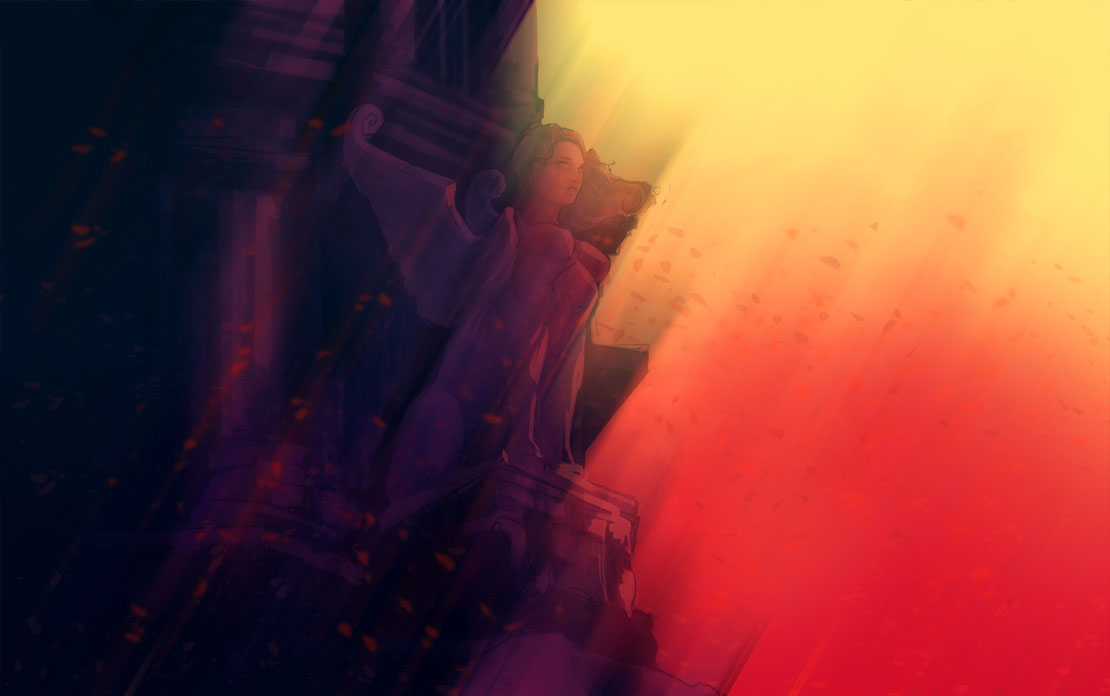A Riddle
Imagine you are in a room with no door, how do you get out?
In every interactive story, there is always an unspoken deal between the creator and the player. The expression “play the game” couldn’t be more appropriate: the player accepts to follow a set of rules to make the game work. This mechanism isn’t quite different from what’s happening at a pen and paper role-play table: the player projects himself in a character, which enables him to act inside an imaginary universe following a preestablished rule-set.
The game master’s or, for us, the designer’s job is to allow the interaction to take place without breaking the cohesion of the game universe. If this equilibrium may appear to be quite fragile, it can also surprise us by its stability.
The answer is: “stop imagining”.
If anything breaks this unspoken deal, the illusion, or “the suspension of disbelief” ceases immediately and the game doesn’t work anymore. The real game, all in all, is to pretend for an instant that it’s not a game at all, that the strings of the puppets, as crude as they may be, are really invisible.
Imaginez que vous êtes dans une pièce sans issue. Comment pouvez-vous vous échapper?
Dans le cadre d’une narration interactive, il y a une sorte de pacte tacite entre le créateur et le joueur. L’expression “jouer le jeu” ne saurait être plus appropriée : le joueur accepte de se plier aux règles imposées par le cadre ludique. Le mécanisme est finalement très proche de ce qu’il se passe à une table de jeu de rôle: le joueur se projette dans un personnage qui lui permet d’agir au sein d’un univers imaginaire par l’intermédiaire d’un ensemble de règle pré-établies.
Le maître de jeu, ou, ici, le designer, s’emploie à permettre l’interaction en maintenant la cohérence de l’univers mis en place. Si l’équilibre peut paraître fragile par certains cotés, il est pourtant parfois d’un stabilité surprenante.
La réponse est : “arrêtez d’imaginer”.
Si quelque chose vient briser ce pacte tacite, l’illusion, ou la “suspension de l’incrédulité” cesse immédiatement et le jeu ne fonctionne plus. Le jeu consiste à prétendre quelques instants qu’on ne voit plus que c’est un jeu; que les ficelles des marionnettes, aussi grossières soient-elles, sont réellement invisibles.

2 Comments
I think this might be the best place to say this. I am going to assume that there will be things to collect in this game, just like there were clues to collect in echoes. The main thing that broke the immersion whithin Echoes was finding clues. While it was not a problem in the game’s first chapter, the second and fifth chapter had a few small clues that would blend so well into the environment that I would end up having to press on every part of the screen until I found it. Specifically, there was a cigarette in episode 2, outside the Raymond’s hideout that even when I knew where it was supposed to be, I could not see at all, and a lighter in episode 5 that was in the bank, but was completely indistinguishable from the other background items on the front desk. The first chapter handled clues perfectly, as they would appear more “real” than the background. In the episodes after that, however, they would generally look the same. This wasn’t a problem when you knew what you were looking for, but random clues were sometimes too time-consuming to find, and for me, there is nothing worse than being uncertain of whether something went wrong and a clue didn’t show up, or if there is indeed a clue that I didn’t find after 15 minutes. Hopefully, if Along the Edge has clues (or something equivalent to clues), they will stand out form the environment in the way that chapter one of Echoes did. I just thought it might be useful to tell you about this as a player, because a player is the one most likely to find something that will break immersion.
Hello Solomon,
glad you’ve found us. 🙂
Thanks for the input, but there won’t be a “hidden object” mechanic in this game.
We really hope you’ll it like as much as you liked Echoes.